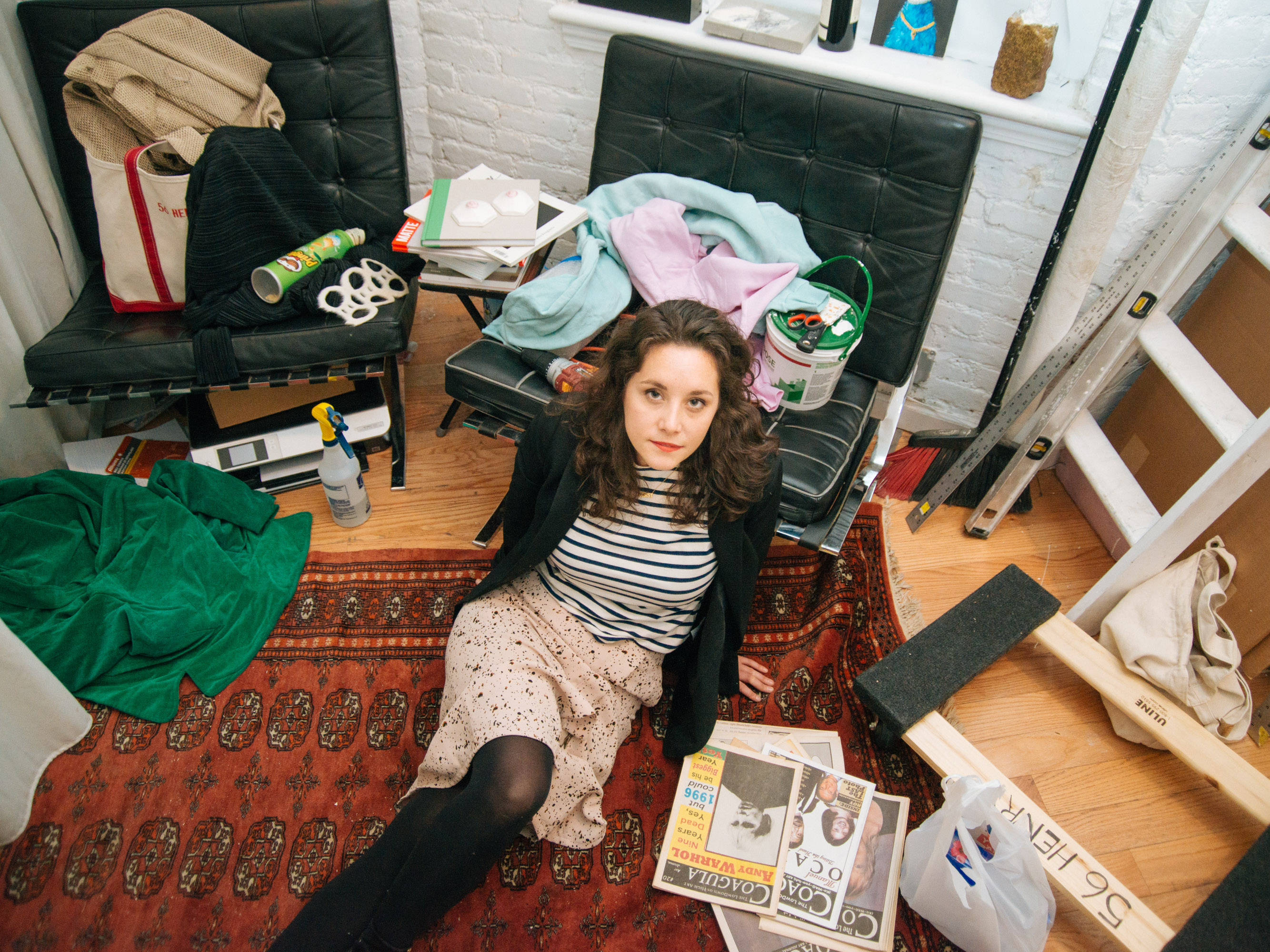
Tucked away in a tiny Chinatown storefront, 56 Henry is the sort of gallery that conjures images of eras past. The three-room space sits just west of the Manhattan Bridge and doubles as the home of gallerist Ellie Rines, whose lofted bed is in the back room “where the air conditioning is stronger” and two black leather Barcelona-style chairs are the only seating option. The shower is used for storage.
“Sometimes people come here and are like, ‘Oh what a great space,’ and I’m like, ‘No it’s a terrible space,’” Rines says, laughing. “But,” she straightens up, “I try to work with the best artists possible and this space is alternative enough that people like Jessica Stockholder, Hanna Liden, Michelle Segre and Polly Apfelbaum have done exhibitions here.” For “Bagels and Locks,” which closed last month, Kate Shepherd transformed the gallery into a New York City construction site. Hunter green and blue plywood walls chain-locked closed with a diamond-shaped observation window comment on the ever-transforming urban landscape while recontextualizing aesthetic elements so familiar to New Yorkers they are essentially invisible.

Rines’s unselfconscious disposition and immediate friendliness are refreshingly disarming. Her vision and ambition, meanwhile, are clear and focused. With a background in Chinese antiquities, Rines opened her first space, 55 Gansevoort, when she was just 25 years old and working uptown for Craig Starr. “I learned so much from Craig’s model,” she says. “I want to do the highest quality shows without thinking about what is the most salable, so I think of the shows and the sales separately.”
When Rines started 55 Gansevoort she had enough money to last three months. She’s now in her fourth year, having moved to Chinatown two years ago. Part of the success of her model is an openness rare in today’s art world. Rather than zero in on a particular scene or type of artist, Rines describes her program more like a buffet. “I don’t want to only show young artists who aren’t represented. I just want to show the best artists I can.”
Rines works with many artists, but keeps her official roster trim, representing only painters Richard Tinkler and Cynthia Talmadge. Hanging opposite us is Divorced and Selling the Beach House, a recent sand painting by Talmadge. Rines points out a sawed-off shotgun in the work. “These paintings are a take on Seurat’s pointillism, but are really contemporary,” she says. “For Cynthia’s show last winter she designed sweatshirts that we sold for $100 and there were smaller versions of her photographs available for $800. There aren’t many galleries that sell work for under $1,000, but it’s a way to create an entry point for someone to collect.”



